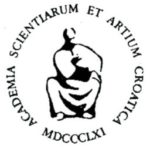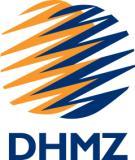Integrated Hardware-Software System for Environmental Parameter Monitoring at Microlocations

Project code: RC.2.2.08-0027
Project Duration: 28 Oct 2014-28 Feb 2016
Project location: Location of the Beneficiary, Partner and the territory of the Republic of Croatia
Project value: 5,461,130.01 HRK
EU funding: 75 %
BENEFICIARY
Institute for Medical Research and Occupational Health
Ksaverska cesta 2
10 000 Zagreb, Croatia
T +385 1 46 82 570
F +385 1 46 73 303
E iprlic@imi.hr
Participants: M. Avdić, I. Bešlić, T. Bituh, S. Davila, M. Herman, M. Justić, D. Kosmina, J. Macan, G. Marović, T. Meštrović, Lj. Orešić, I. Pavičić, J. Senčar, S. Stankić Drobnjak, M. Surić Mihić, K. Šega, J. Šiško, J. Tončić, R. Turk, M. Zorić
PARTNER
Ericsson Nikola Tesla d.d.
Krapinska 45
10002 Zagreb, Croatia
INTERMEDIATE BODIES (PT)
PT1
Ministry of Science, Education and Sports
URL http://www.mzos.hr
E znanost@mzos.hr
PT2
Central Finance and Contracting Agency
URL http://www.safu.hr
E info@safu.hr
Summary
One of the fundamental goals of this project is the transfer of the user’s (technological) knowledge of the method and validation of radiation and other physical parameter measurements in the environment to the industrial partner of the project. Both sides (IMI and Ericsson Nikola Tesla d.d.) entered the project with their unique, mutually complementary, innovation processes and knowledge, creating thus an entirely new innovative concept in the area of remote recording and monitoring of environmental parameters in microlocations. The objective of the project was, specifically, to industrially explore the possibilities of creating a reliable system for the remote recording, monitoring and validating of at least five different environmental parameters on a large number of sites, focusing on radiation, and to check it from a technical and safety standpoint. The fact that environmental parameters monitored from various sensors are combined/integrated (in this case for electromagnetic radiation – UV, VF, RF…) points to an additional possibility for supervising the human impact on and activity in the environment. This project confirms that environmental activities can be scientifically validated on a base sensor e-platform, developed by users, and then using M2M networking they can be integrated in one controlling location from which, with security authorisations, they can be continuously monitored, suitably processed, and used for the surveillance of pollution or for future plans on the economic interventions in the environment. All this is just part of the possibilities that, through a partnership between science and economy, can be provided by the IPPSO project in the future. In a very direct way, the IPPSO project contributes to sustainable development and, in particular, to environmental protection aimed at the protection of health, and the well-being of humans and the biotas. In order for the competent institutions to draw accurate implementation, and in particular health conclusions, they must dispose of as much relevant and validated information as possible. This is even more so when it comes to natural disasters or accidents when sufficient information from the field enable quick decision-making in order to mitigate such complex situations, reduce all kind of damage and mortality of people and animals. The project contributes directly to economy by creating databases and maps relative to the environmental and urban area situations.




